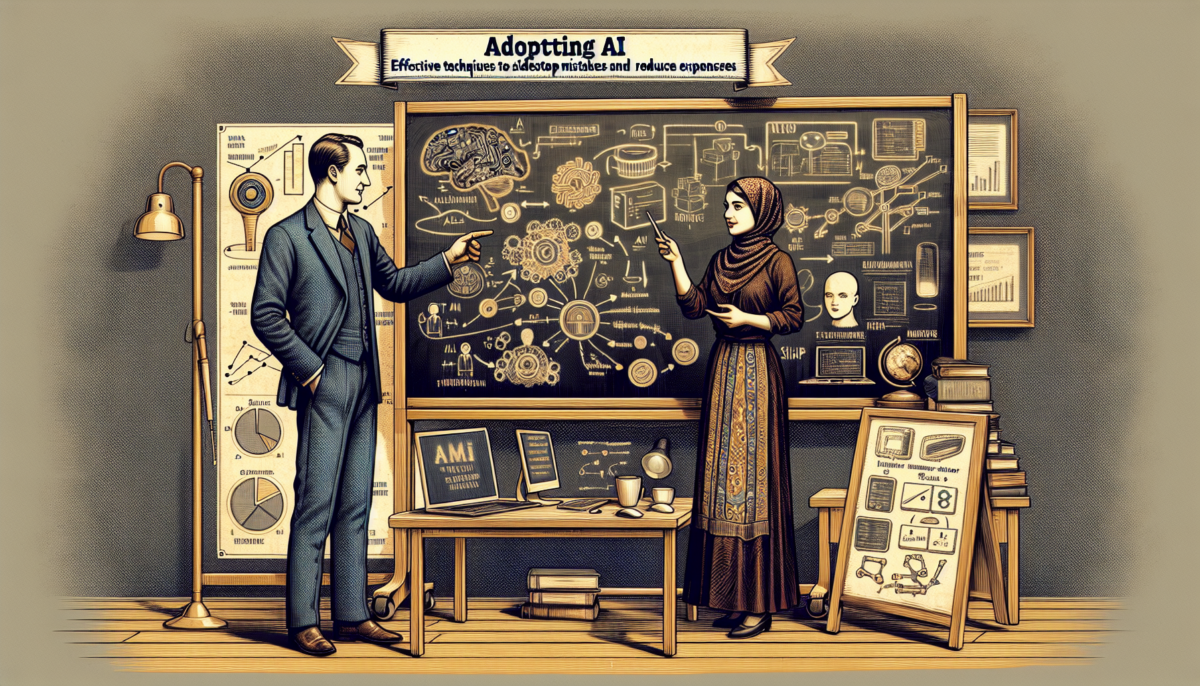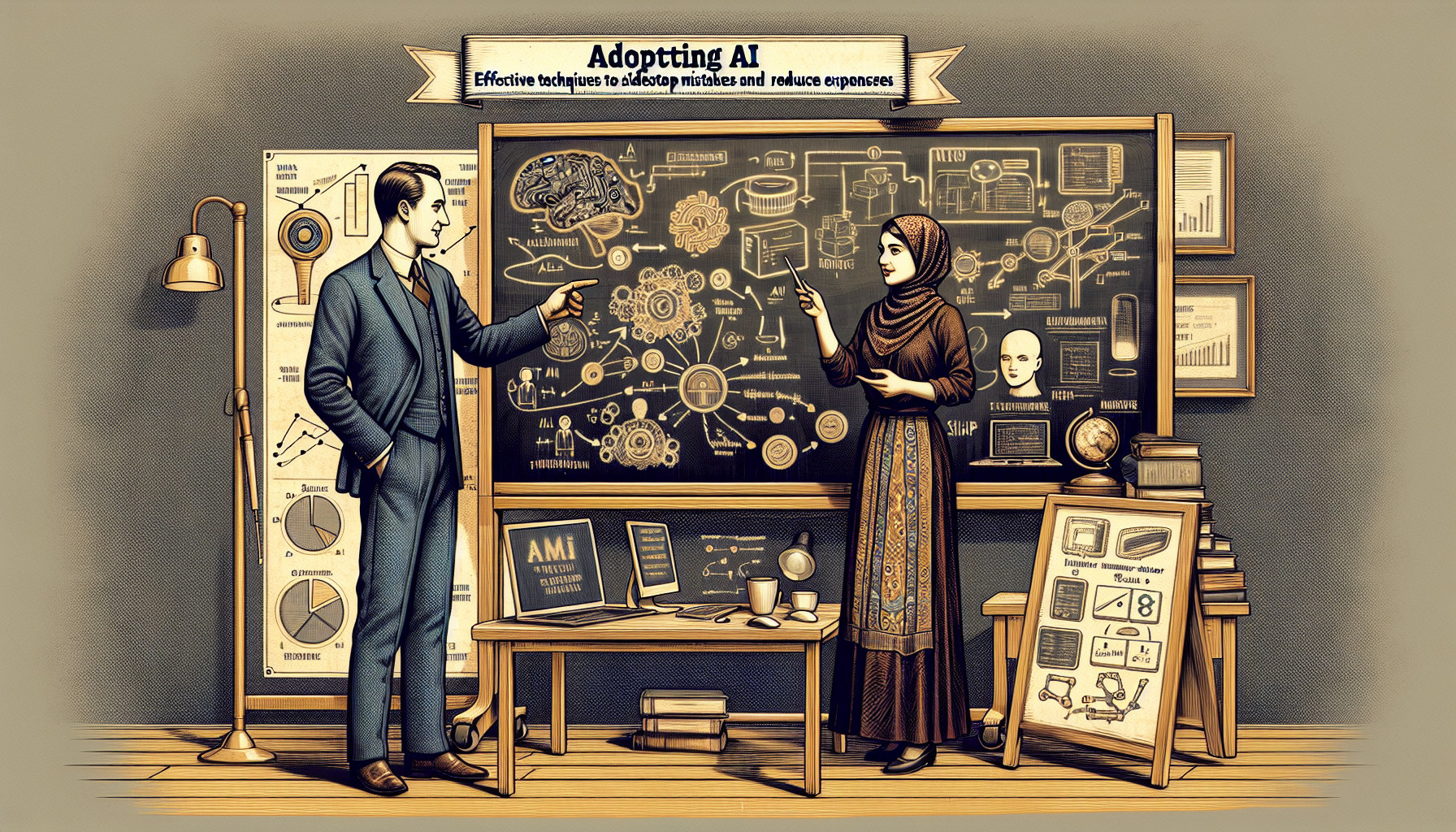“Adopting AI: Effective Techniques to Sidestep Mistakes and Reduce Expenses”
We independently review everything we recommend. When you buy through our links, we may earn a commission which is paid directly to our Australia-based writers, editors, and support staff. Thank you for your support!

Integrating AI into Australian Enterprises: Strategies to Sidestep Setbacks and Reduce Expenses

Quick Overview: Main Insights
- AI has emerged as a predominant resource within Australian enterprises, with 56% of firms incorporating AI into pre-existing applications.
- Sales and marketing are at the forefront of AI usage, followed by strategy, customer operations, and compliance/risk areas.
- 34% of companies aim to create their own AI solutions to optimize workflows.
- Successful AI implementation necessitates a strategic long-term approach, alongside defined metrics and quantifiable goals.
- Selecting the appropriate AI partner is vital; they should prioritize people, training, compliance, and management of change.
The Growth of AI in Australian Enterprises
Artificial Intelligence (AI) has transcended the status of a mere trend in Australia; it is an established phenomenon that businesses nationwide are swiftly embracing. Whether employing ChatGPT for email composition or integrating Microsoft Copilot for scheduling, AI instruments are increasingly becoming vital to everyday operations. A recent survey executed by Tecala in their report *Start Smart: Navigating Your AI Journey* reveals that Australian businesses harbor optimism about AI’s potential, scoring the notion “The sooner we implement AI solutions and tools, the better our business performance will be” an average of 7.7 out of 10.
Nonetheless, in spite of the widespread excitement, a persistent question lingers: in which areas will AI yield the greatest benefits? And how can Australian enterprises steer clear of the challenges tied to its implementation?
Where AI Generates the Greatest Influence
As detailed in the *Start Smart* report, AI is instigating notable transformations, especially in sales and marketing, which are witnessing the highest levels of investment and innovation. Closely following are strategy, customer operations, and compliance/risk management. Other sectors, including HR, supply chain, finance, R&D, IT, and legal, are also beginning to experience advantages, though the extent of AI integration fluctuates across industries and workloads.
Crucially, while numerous companies are incorporating AI within existing systems and platforms, 34% of surveyed enterprises are opting for a bolder strategy, aspiring to devise their own AI applications to streamline and bolster business processes.
Challenges Associated with AI Adoption
Implementing AI is not merely a matter of activating a feature. The AI landscape is congested, and businesses encounter a barrage of contradictory messages from providers. It’s imperative to take a systematic, pipeline-driven approach, generally comprising three phases: strategy, ideation, and deployment.
The *Start Smart* report emphasizes that AI initiatives may not always be guided by technology leaders, highlighting the critical need to align AI ventures with broader organizational objectives, instead of pursuing AI for its own sake. A primary takeaway is that organizations should resist the urge to hasten the process. Strategic long-term deployment of AI significantly enhances the probability of success compared to rapid, uncoordinated implementations.
Expanding AI for Sustained Success
One of the most considerable hazards of launching AI without a well-defined strategy is scalability. If an AI solution is implemented without thorough planning, businesses may find themselves in a scramble to procure additional tools to sustain similar functionality. This can trigger governance complications, escalated risk exposure, and inflated expenses.
According to the report, leaders in business units and digital transformation teams often serve as the main internal sources for AI concepts. However, organizations should steer clear of overwhelming themselves with an exhaustive list of potential projects. Instead, they should adopt a metric-based framework to prioritize efforts, guaranteeing each has discernible success criteria. The fact is that 90% of AI proof-of-concept initiatives falter due to inadequate comprehension of the ongoing commercial model after deployment.
Preparing for Implementation
Prior to launching any AI solution, businesses should execute a thorough assessment of their technology framework. This ensures that their current infrastructure, encompassing network and storage systems, is equipped to meet the increased demands resulting from AI integration. Adhering to relevant Australian regulations and data protection laws is equally vital.
Furthermore, AI adoption presents not only a technological obstacle but also a human one. Organizations must implement training programs to ensure that personnel are sufficiently prepared to utilize new AI tools. If collaborating with external partners, it’s essential to clearly outline each party’s roles to eliminate confusion during the implementation stage.
Selecting the Right AI Partner
With 56% of businesses indicating a desire to engage a technology collaborator for their AI endeavors, identifying the right partner is a pivotal element of the AI journey. The ideal partner should not only bring technological prowess but also prioritize change management, training, and conformity. They must recognize that AI is fundamentally about empowering individuals to perform their roles more efficiently and profitably, rather than merely focusing on the software itself.
Moreover, AI is a relatively nascent and swiftly evolving area. Many firms might experience the “we don’t know what we don’t know” dilemma, meaning they can be oblivious to potential issues until it’s too late. This underscores the importance of experience, creativity, and foresight as essential attributes in an AI partner.
Conclusion
As AI transitions into a mainstream resource for Australian enterprises, organizations need to navigate its complexities with caution. From pinpointing where AI can deliver the most value to ensuring scalability, compliance, and appropriate training, the path to effective AI adoption presents a mix of opportunities and challenges. Long-term strategies, metric-based project prioritization, and finding the right technology partner are crucial for ensuring that AI solutions generate tangible business benefits while steering clear of expensive missteps.
Q: In what ways can AI benefit my business aside from automation?
A:
AI can enhance decision-making processes, elevate customer experiences, and streamline operations throughout various departments. It transcends mere automation; AI can reveal insights based on data that were previously hard to reach, aiding businesses in making quicker, smarter decisions in real-time.
Q: Should I develop my own AI applications, or is it possible to utilize existing tools?
A:
This hinges on your particular business requirements. While 56% of Australian companies are integrating AI into existing applications, 34% are choosing to build their own AI solutions. Employing existing tools might be faster and more economical, yet custom applications can provide a competitive advantage by tackling specific business challenges.
Q: What is the greatest risk when deploying AI?
A:
The most significant risk lies in scaling AI without a clear, long-term strategy. Impromptu implementations may yield temporary results but can lead to governance challenges, higher costs, and difficulties in sustaining functionality. A methodical, metric-focused approach greatly enhances the chances of success.
Q: How essential is it to have a technology partner for AI implementation?
A:
A technology partner can be indispensable, especially for organizations lacking in-house AI know-how. The right partner will assist with change management, training, and compliance, ensuring that AI solutions are effectively adopted and provide lasting value.
This article has been structured and formatted with SEO best practices in mind, including relevant headings and subheadings, alt image tags, and a coherent, engaging flow that will benefit readers interested in AI adoption in Australian enterprises.
